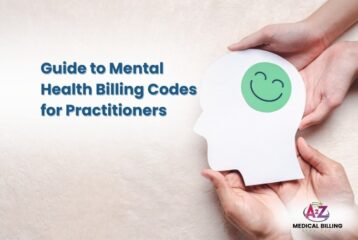As a healthcare provider, it is essential to understand the coding guidelines and documentation. It might be challenging for Healthcare providers to choose an accurate ICD-10 code for various conditions, especially when it comes to conditions like morbid obesity ICD-10 code. Proper coding ensures that you are providing high-quality care to your patients. It will assist in the financial stability of your practice.
The accurate and precise morbid obesity ICD-10 code is E66.01. Accurate coding of the E66.01 diagnosis code determines appropriate reimbursement from insurance providers and other payers.
Concept of Morbid Obesity
In the United States, millions of people are suffering from a serious health issue known as morbid obesity. Morbid obesity is a term used to describe a severe form of obesity that may cause significant health risks. It is defined as having a body mass index (BMI) of 40 or higher. This condition can increase the risk of various health problems, such as heart disease, diabetes, and joint issues.
It is important to address morbid obesity through a comprehensive approach that includes lifestyle changes, dietary modifications, and, in some cases, medical interventions. It is important to seek medical guidance and adopt a holistic approach to manage and treat morbid obesity. Morbid obesity, ICD-10 code E66.01 is used to classify and identify this condition.
Commonly used ICD-10 Codes for Obesity Management
| Code | Code Description |
| E66.0 | Obesity ( Red Code) |
| E66.01 | Morbid Obesity due to Excess Calories |
| E66.1 | Drug-induced Obesity |
| E66.2 | Endocrine disorders |
| E66.3 | Other specified causes of Morbid Obesity |
BMI Diagnosis Code for Morbid Obesity
The BMI diagnosis code is a specific code used in the International Classification of Diseases, 10th Edition (ICD-10), to classify and diagnose conditions related to body mass index. The morbid obesity ICD-10 code based on BMI is E66.01. Here are some other BMI diagnosis codes for morbid obesity.
| Code | Code Description |
| Z68.41 | BMI 40.0-44.9, adult |
| Z68.42 | BMI 45.0-49.9, adult |
| Z68.43 | BMI 50.0-59.9, adult |
| Z68.44 | BMI 60.0-69.9, adult |
| Z68.45 | BMI 70 or greater, adult |
Coding Guidelines for Healthcare Providers when Treating a Patient with Morbid Obesity
When treating a patient with morbid obesity Healthcare providers should be aware of coding guidelines. These guidelines will help to determine the accurate ICD-10 code and enhance reimbursement.
When a patient comes to you for a proper diagnosis of morbid obesity, it is important to confirm the specific insurance requirements to ensure an accurate recording of their status and the service provided. The requirements must be verified with the relevant insurance providers or Medicaid agency before initiating any treatment.
Healthcare providers should ensure detailed documentation of the patient’s weight and BMI, as well as any associated health conditions. The primary diagnosis code for morbid obesity remains unchanged, the BMI Z codes may vary. This information is crucial for proper coding and billing.
When coding for morbid obesity ICD-10, providers should use the specific diagnosis code that corresponds to the patient’s condition. In this case, the relevant ICD-10 code would be E66.01 for morbid obesity due to excess calories.
It is important to document any comorbidities or related health issues that are present in the patient. These could include conditions like diabetes, hypertension, or sleep apnea. Properly coding these comorbidities can provide a more accurate representation of the patient’s overall health status.
When BMI Z codes should not be used?
Pregnancy: When someone’s pregnant, their body goes through lots of changes, including gaining weight on purpose. Therefore, BMI Z codes are not applicable here because they do not accurately reflect what is considered healthy during pregnancy.
Temporary medical conditions affecting weight: If you’ve got a health issue like a thyroid problem that makes your weight increase, BMI Z codes will not be much help. They can’t keep up with the sudden shifts in your weight.
Pediatric growth and development stages: Kids and teens are still growing, and their bodies change a lot in a short time. BMI Z codes are not the best at this stage.
Conditions causing fluid retention: If your body’s holding onto water because of a condition like heart or kidney problems, you might look heavier on the scale. BMI Z codes don’t take that into account, so they might not be accurate.
Significant weight changes from medical treatments: Sometimes, treatments like chemotherapy can make you lose or gain a lot of weight quickly. BMI Z codes can’t tell the difference between these changes and your usual weight, so they are not very useful
Reimbursement for ICD-10 code E66.01: Morbid Obesity
Healthcare providers can receive reimbursement for the treatment of morbid obesity by submitting the appropriate ICD-10 code, E66.01.Submitting the ICD-10 code E66.01 provides detailed information about the patient’s weight, BMI, and other associated comorbidities. Thorough documentation helps support the medical necessity of the reimbursement process.
Furthermore, reimbursement policies and procedures can vary among different insurance companies and healthcare systems. It is always recommended for healthcare providers to consult with their billing and insurance representatives to understand the specific reimbursement guidelines for morbid obesity treatment.
Conclusion
Using the correct morbid obesity ICD-10 code is crucial for patient care and the sustainability of the practice. This code not only has significant implications but also enables healthcare providers to deliver the necessary treatment to patients. Understanding and applying E66.01 is not just about numbers, it is about facing a big health problem directly. This approach improves healthcare providers’ ability to treat and reduce the risks associated with morbid obesity.



